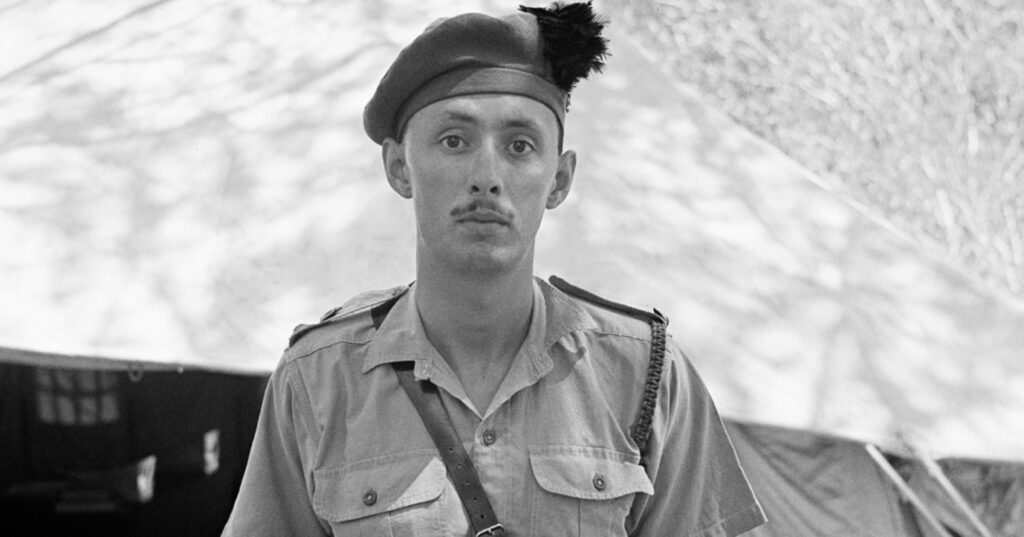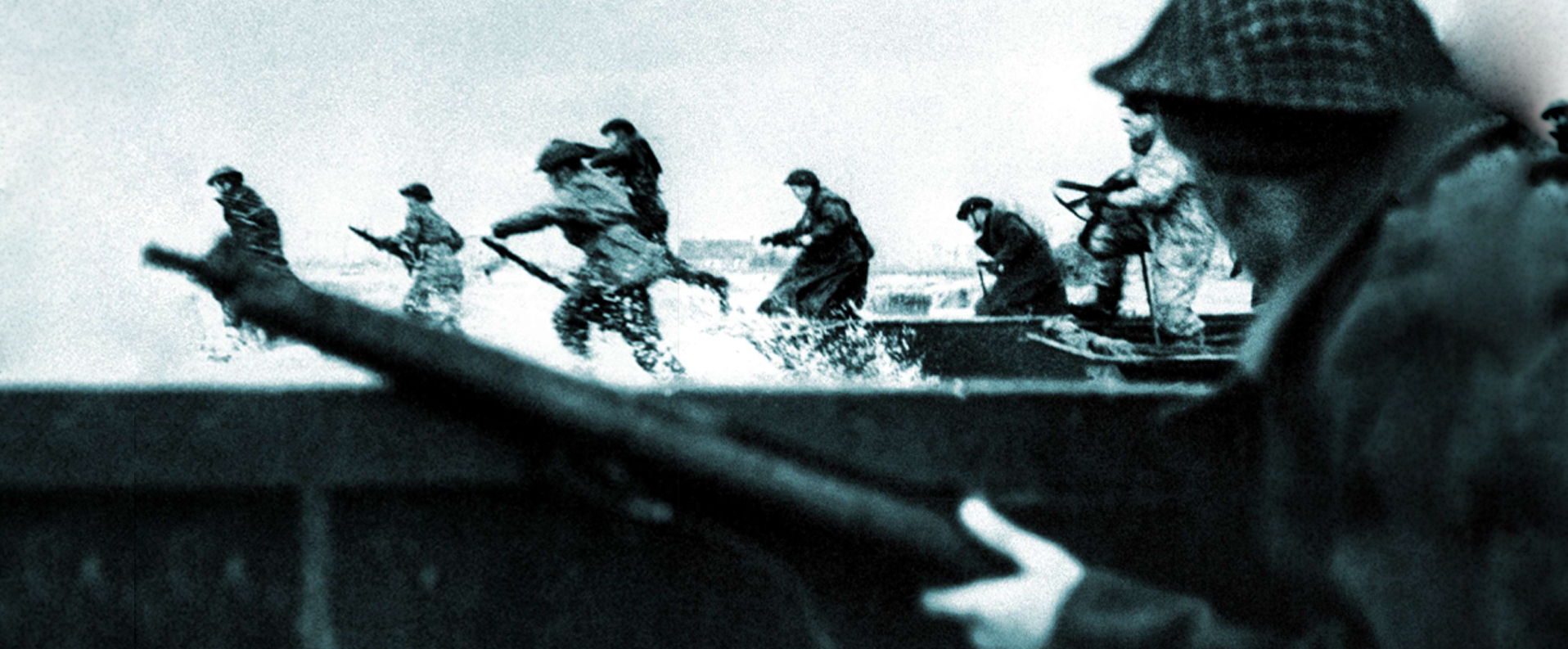
Published in Britain at War in February 2022.
Lieutenant Colonel Geoffrey Charles Tasker Keyes VC, MC
Geoffrey Keyes was awarded the VC for one of the most daring actions of the Second World War. As someone who has admired courage for more than half a century and as the privileged custodian of the Keyes medal group, I am loathe to describe anyone as “too brave” because it implies criticism. And how can your fault someone who has given his life for King and country? However, the raid that cost Keyes his life was, with the benefit of hindsight, hopelessly misguided.
Geoffrey Charles Tasker Keyes was born in Aberdour, Fife, Scotland, on May 18 1917, the son of Lord Keyes, the Admiral of the Fleet. Keyes Jnr was educated at King’s Mead School, Seaford, Sussex, and Eton College. He had hoped to follow his father into the Royal Navy but he failed the eyesight test. Instead he attended the Royal Military College, Sandhurst, and was commissioned into the Royal Scots Greys as a second lieutenant’.
From October 1938, Keyes served in Palestine but, while on leave in February 1940, he volunteered for special service just as some senior officers were seeing the benefits of using small, highly-specialised units to launch hit-and-run raids behind enemy lines. As an accomplished skier, Keyes was picked for the Narvik Expeditionary Force, joining the unit in April 1940. However, when the Allies had to retreat from Norway he was evacuated back to Scotland and later rejoined his regiment. He then briefly served as liaison officer to the Chasseurs Alpins, and for his work in that role was awarded the French Croix de Guerre.
Next, he volunteered to join the newly formed Commando organisation. Keyes was posted to No. 11 (Scottish) Commando and, after a rigorous training programme, embarked for the Middle East in January 1941. Two months later he was promoted to acting major and in June he was appointed in the rank of acting lieutenant colonel. In the same month he was awarded the Military Cross (MC) for his bravery in the Litani River action in Lebanon.
By the autumn, Keyes had formulated a daring plan and, after much persuasion, won over General Headquarters Cairo to sanction an attempt to destroy the German HQ, 250 miles behind enemy lines at Beda Littoria, Libya. Furthermore, the intention was to capture General Erwin Rommel, commander of the Afrika Korps. The “Rommel Raid”, codenamed “Operation Flipper, was timed to coincide with a British offensive on 17/18 November 1941, codenamed “Operation Crusader”. Colonel Robert Laycock, the Officer Commanding Middle East Commando operations, had reservations about the mission but decided to accompany the force as an observer. He remained at the landing place throughout “Operation Flipper”.
It is Laycock’s own full report – rather than the heavily edited version that appeared in The London Gazette – which follows:
“Lt. Col. Geoffrey Keyes, Royal Scots Greys, commanded a detachment of a force which landed by submarine . . . behind the enemy lines to attack Headquarters, Base, Installations and Communications. The original plan, formulated several weeks in advance at 8th Army Headquarters, included orders for attacks on various separate objectives. Although the whole operation was considered to be of a somewhat desperate nature, it was obvious that certain tasks were more dangerous than others.
“Colonel Keyes, who was present at all the meetings and assisted in the planning, deliberately selected for himself from the outset the command of the detachment detailed to attack what was undoubtedly the most hazardous of these objectives – the residence and Headquarters of the General Officer Commanding the German Forces in North Africa. (When the plan was submitted to me as Commander of the Middle East Commandos, in which capacity I may be regarded as having some experience of this type of warfare, I gave it my considered opinion that the chances of being evacuated after the operation were very slender and that the attack on General Rommel’s house in particular appeared to be desperate in the extreme. This attack, even if initially successful, meant almost certain death for those who took part in it. I made these comments in the presence of Colonel Keyes, who begged me not to repeat them lest the operation be cancelled.)
“In the execution of the Operation Colonel Keyes led his detachment ashore. The majority of the boats, including his own, were swamped on the passage in to the beach but, whereas his officers and men were able to take advantage of the shelter of a cave in which they lit a fire, warmed themselves and dried their clothing, Colonel Keyes remained throughout the night on the beach to meet any men who managed to get ashore from the second vessel.”
As the weather deteriorated, so too did the morale of some of his men but Keyes was determined to press ahead with the attack, moving towards his target only in darkness, until the party were close to their objective by the fifth day. Once again Laycock’s report takes up the story:
“Having detailed the majority of his men to take up positions so as to prevent enemy interference with his attack on General Rommel’s residence, Colonel Keyes was left with only one Officer (Captain Campbell) and one other Rank (Sgt. Terry) with whom to break into the house and deal with the Guards and Headquarters Staff. At zero hours (2359 hrs) having dispatched the covering party to block the approaches to the house and to guard the exits from neighbouring buildings, he himself with Captain Campbell and Sergeant Terry crawled forward past the guards, through the surrounding fence and so up to the house itself.
“Colonel Keyes hoped to be able to climb in through a window or enter by the back premises but these proved to be inaccessible. He therefore, without hesitation, boldly led his party up to the front door and, taking advantage of Captain Campbell’s excellent German, beat on the door and demanded entrance. As soon as the sentry opened the door Colonel Keyes and Sergeant Terry set upon him but, as he could not be overpowered immediately, Captain Campbell shot him with his revolver. The noise naturally but unfortunately roused the inmates of the house. Colonel Keyes, appreciating that speed was now of the utmost importance, posted Sgt. Terry at the foot of the stairs to prevent interference from the floor above – a task which he accomplished satisfactorily by firing a burst from his Tommy-gun at anyone who attempted to reach the landing.
“Although the lights in the passage were burning, those inside the ground floor rooms were extinguished by the occupants. If the raiding party was to achieve any measure of success these rooms had to be entered. This could be done by stealth which would however have taken time and, had the enemy been bold enough to come out into the passage, they would immediately have appreciated that they were attacked by three individuals only, whom they could easily have overpowered. The only alternative was to attempt to bluff the occupants by dashing into each room in turn with a minimum of delay. This latter course Colonel Keyes unflinchingly adopted although he undoubtedly realised that it was almost certain death for the man who first showed himself silhouetted by the passage lights against a darkened doorway.
“Colonel Keyes, who instinctively took the lead, emptied his revolver with great success into the first room and was followed by Captain Campbell who threw in a grenade, but the inevitable result of such daring occurred on his entering the second room of the ground floor. He must have been perfectly aware that it was occupied, since Sgt. Terry, who was a few yards away, reported to me later that he could distinctively hear the occupants breathing and moving about inside. Colonel Keyes was shot almost immediately on flinging open the door and fell back into the passage mortally wounded. On being carried outside by Captain Campbell and Sgt. Terry he died within a few minutes.”
Of the entire force, only Laycock and Terry made it back to British lines after 37 days in the desert. From the British party that had taken part in “Operation Flipper”, it is believed two were killed and 28 were captured, including three wounded. German casualties were put at four dead and three wounded.
It later transpired that Rommel had never used the building raided by Keyes. In any event, he had been in Rome at the time of the attack. Nevertheless, he heard of the raid and clearly respected Keyes’s bravery because he sent his personal chaplain to Libya to conduct the funeral of the commando. Sir Winston Churchill, who comforted Admiral Keyes on the loss of his son, said: “I would far rather have Geoffrey alive than Rommel dead.”
Keyes, who was single, had died on November 18 1941, aged just 24. His VC was announced on June 19, 1942, and the citation ended with the words: “By his fearless disregard of the great dangers which he ran and of which he was fully aware, and by his magnificent leadership and outstanding gallantry, Lieutenant-Colonel Keyes set an example of supreme self sacrifice and devotion to duty.”
As stated, Laycock, who drew up the report on which the VC citation was based, had not been present when Keyes and his men attacked. There are suggestions, from author Michael Asher and others, that the account of the final attack used for the VC citation was not entirely accurate and that the events of that day may have been even more chaotic than was reported. It is not impossible that, in the confusion, Keyes was killed by a bullet fired from one of his own men, although this claim is disputed. As they say, the first victim of war is the truth and the exact circumstances of the raid have been blurred by both time and a desire to portray the attack in a good light.
What is indisputable is that Keyes, who always seemed keen to match his esteemed father’s military career, was incredibly brave. His father was presented both his son’s VC and MC by George VI at an investiture at Buckingham Palace on December 11 1942. After the war, Keyes Jnr’s remains were moved from a small cemetery in Beda Littoria to the Benghazi War Cemetery in Libya. In April 1950, a memorial to Keyes was unveiled by Churchill at St Paul’s Cathedral. There are other memorials to Keyes and his father was also presented with a portrait of his son by the British painter Sydney Kendrick.
Download a PDF of the original Britain at War article.
For more information, visit:
LordAshcroftOnBravery.com


